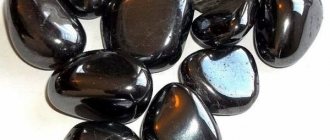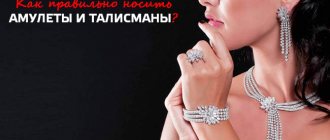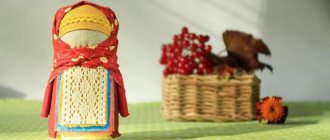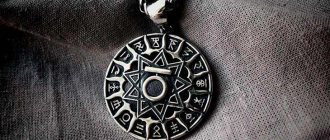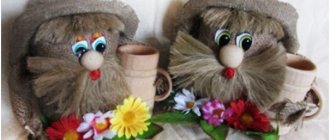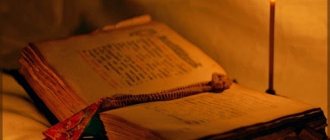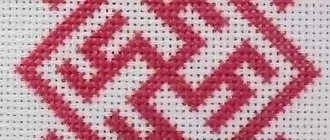The meaning of amulets
Since ancient times, it has been generally accepted that Orthodox talismans and amulets have power that can protect their owner from curses, the evil eye, damage, and dark magic.
Today, they continue to believe in their power and use it to strengthen the connection with the Almighty. Christian amulets can protect a person from various evil forces, ill-wishers and troubles. They are able to strengthen a person’s spirit and cleanse it of all negativity. Such items provide protection from evil spirits and strengthen spiritual, physical and psychological health. They can preserve family relationships and help in the treatment of various diseases, which is why such amulets are in great demand among people.
Orthodox amulets are sanctified by God's grace, but only those that are supported by prayer and faith in their power reveal their protective properties. Otherwise, over time, the amulet loses its capabilities.
The meaning of Orthodox amulets
Orthodox amulet of a pectoral cross
Amulets have had and continue to have great importance for every Orthodox Christian. The most popular are icons, crosses, incense, panagia and encolpions, Orthodox rosaries, rings with symbols, belts, prayers and various children's amulets.
The main effect of the amulet is the protection and patronage of Higher powers, the power of faith, support in difficult life situations, strengthening health, guidance on the true path, establishing marital relationships and well-being in the family. Faith in divine powers is not only prayer and the use of paraphernalia, but unconditional love for people and God.
Types of symbolism
Not many amulets have become established in Orthodox culture, but all of them were able to occupy a high place because of their meaning. These include the following attributes:
- icons;
- amulet;
- crosses;
- rings;
- beads;
- various clothes and their elements;
- panagia;
- encolpion;
- gold;
- women's amulet (“Faith, Hope, Love”).
Each of these Orthodox amulets has its own purpose and its own power.
Icons
Objects such as icons are the most revered church symbols. A person can ask images for a blessing for any matter, and entrust them with his innermost thoughts.
Icons protect a person from the influence of ill-wishers and help clear thoughts . When people ask saints for help, a candle is usually placed in front of icons. The most important thing is the sincerity of the request.
One of the most widespread and revered images was the image of the Virgin Mary. Icons dedicated to her not only protect the house from negativity in any form. They can help in solving troubles at work or in business. For women, such icons have their own meaning: they contribute to the establishment of family well-being, protect not only the woman herself, but also her descendants from various ailments.
Icons can be purchased in church shops, or you can make them yourself. Usually craftswomen embroider them with images of different images. If such a talisman is made with your own hands, it has additional power.
Before you start embroidering, you need to do a little preparation. It is important to follow the necessary rules in such a process.
- You need to wash and change clothes - this will rid your body of all the negativity that has already accumulated.
- Icons can only be embroidered during the day.
- Before you sit down to embroider, you need to read the “Our Father” prayer.
- While doing the work, you also need to read prayers. They are prepared in advance. It is better to learn them by heart and read them out loud or silently all the time until the end of the process.
- Embroidery of the icon should be done at the time of fasting; it is important to observe it.
- You need to ask your spiritual mentor in the church for blessings for such a thing.
- When the embroidery process is completed, you need to read a prayer to that saint and name the name of the one whose face is embroidered on the icon.
- The embroidered face of a saint can acquire miraculous powers if it is consecrated with holy water.
It has long been believed that the condition of a woman who embroiders an icon greatly influences the entire process, so it is not recommended to touch the canvas with an unfinished face during pregnancy.
Following these simple rules will help you not just embroider an icon, but turn it into a real amulet. He will protect not only the person who made the icon, but also his home and family.
What Christian amulets can you make with your own hands?
One of the most common Christian amulets that you can make with your own hands is the amulet. It can be made from wood, leather, thick fabric or metal, it all depends on what is more pleasant for the manufacturer to work with. When making an amulet, you need peace of mind and tranquility. Thoughts and intentions must be pure and directed towards the purpose for which the amulet is created. In addition to choosing the material for the amulet, you can choose the shape of the amulet that will suit the owner:
- To gain peace of mind, tranquility and increase the strength of spirit, the wearer will use a square shape.
- The oval shape will help develop such qualities as endurance, wisdom, self-control, and creativity.
- To attract success, the amulet must have a triangular shape.
- An amulet in the shape of a circle helps to attract finance into life.
Inside the amulet you can put the face of the saint to whom prayers are offered, the text of the prayer, and the relics of the saint. The contents of the amulet will depend only on how strong the person’s faith is and what he places his hopes on.
Ladanka
Since ancient times, amulet has been one of the most common amulets. This item looks like a bag in which the text of a prayer can be stored. Usually it is made from natural material on which the face of Jesus Christ is depicted.
The amulet must be worn around the neck as a pendant. For these purposes, choose a leather cord on which the amulet will be attached, but you can do without it by attaching the amulet directly to your clothes. In this case, it should be on the inside of the thing.
Losing an amulet is a bad sign. The meaning of such an event is a warning that someone is bringing negativity to you. If you lose your amulet, you must contact the church for help: order a magpie, buy a new amulet in the church shop.
You must always remember that the amulet is individual, so giving it to other people, even just holding it, is not recommended.
Church attributes
Panagia and encolpion belonged to the church canons because they were used by clergy. They serve as church regalia received as a reward.
Panagia
Panagia is a holy image, small in shape with rounded edges, worn on the chest over clothing. Initially, the panagia served as a vessel for the prosphora, which was dedicated to the Mother of God. Most often, panagias depict the Mother of God, Jesus Christ, the Holy Trinity, as well as scenes from biblical stories.
Only clergymen: bishops, abbots and abbots have the right to wear this amulet. In ancient times, it was customary to keep the relics of Saints inside this amulet. But panagia itself is a powerful protector against negative energy, illnesses, illnesses and family troubles.
Encolpion
Enkolpion is a small rectangular or cross-shaped object in which the relics of saints or particles of prosphora were kept. Most often, the face of Jesus Christ or Saints was depicted on encolpions, and the amulet itself is considered one of the most powerful Orthodox shrines.
It serves as one of the award regalia of the Orthodox Church and is worn over clothing, suspended on a chain. Such amulets are intended to protect against troubles, illnesses and serious illnesses. Often people turn to the encolpion for help in solving urgent matters, in business, study, career and at work.
Cross
A pectoral cross is an Orthodox amulet that most Christians carry with them. It is a reminder not only of the Savior’s crucifixion, but also of the canons of Orthodoxy and commandments. The power of the pectoral cross helps to protect yourself from life’s troubles, curses and illnesses, so it is better to always wear it and try not to take it off.
A pectoral cross together with prayer will strengthen your faith and protect you from evil spirits, evil people and their influence. There is a belief that you should not accept it as a gift from another person or wear it if it was found on the street. Thus, along with the cross, all ailments and problems from its previous owner can pass to you.
The cross will serve as a particularly strong amulet for pregnant women. It will help the expectant mother repel any damage directed at the child and herself. He will save them from various kinds of troubles and harm from other people.
Christian symbols
Pectoral cross
The main symbols of faith include the cross, wearing which a person must always remember the self-sacrifice of Christ for the sake of humanity.
Often the classic symbol of Orthodoxy is called an amulet that protects from evil, but it only acts as a symbol of faith that will save a person. The amulet does not allow one to forget about the great sacrifice of Jesus, and also about how he rose to heaven. If there is no faith or a person uses other talismans along with the cross, then it will not help. Orthodoxy requires constant mental communication with God through prayers to cleanse oneself of sinful thoughts. A pectoral cross strengthens faith and allows you to perform righteous deeds.
The priests believe that it is better to make a symbol of Orthodoxy from the wood that made up the Cross for the crucifixion of Jesus. Cypress, fir, which is also called pevg, and Lebanese cedar are suitable. Less suitable jewelry is silver, gold and platinum. If financial resources do not allow, then any other materials can be used instead of precious metals.
Orthodox clergy speak negatively about aluminum and especially plastic crosses, since this is an unsuitable basis for a divine symbol.
In Orthodoxy, it is believed that a donated pectoral cross cannot be worn by an adult woman or man, otherwise the sins of the donor may be taken upon oneself. The exception is gifts from mother to baby, because such a Christian talisman acts as a symbol of the family. The cross can be worn constantly, without taking it off at night or when taking water procedures.
Orthodox icon
Sometimes people resort to the help of the Icon of the Intercession of the Virgin Mary to strengthen marriage bonds.
Images of God or saints have been worn around the neck since the Middle Ages. The image of the Mother of God is especially revered. They turn to her with a request for the preservation of family ties and happiness. For icons you should go to specialized shops or a church. It would be better if they were drawn by hand by a true believer. To say that icons are Christian amulets, according to Orthodoxy, is a great sin and a desecration of the name of God. Images of saints only remind us that the Lord supports everyone. However, many use icons as amulets and turn to the “Protection of the Holy Mother of God” to obtain the following effects:
- protect yourself from envious people and curses;
- improve health;
- achieve academic success;
- strengthen the marriage.
Incense for sacred things
Body icons, grains of land collected in Jerusalem, or prayers are often stored in a special box or bag. The amulet is easy to use: you just need to hang it on a cord and wear it as a pendant, but it is important that it is located in the chest area. The fabric is often decorated with a drawing of Jesus. The amulet is intended for one owner only. Loss is a bad sign, indicating a sin has been committed that needs to be prayed for. You can make an amulet with your own hands as an amulet if the shop in your hometown does not provide such a product. The following instructions will do:
To make such an attribute yourself, you will need aspen chips.
- 2 leather rectangles are cut out and sewn into a bag. In this case, one side is left open.
- A folded prayer text is placed in the hole, as well as soil from under the window, aspen chips and incense.
- The open side is sewn up and a lace is made.
- The bag is illuminated in the church.
Rings
No less common than crosses among Orthodox amulets are rings with different church inscriptions. The words most often found on them are: “Lord, save and preserve.”
When wearing the ring for a long time, it is fueled by the energy of the owner, thanks to which in difficult times it can provide the necessary spiritual support. Wedding rings are considered amulets of Orthodox culture that seal the union.
Orthodox amulets and amulets in the form of rings with inscriptions are usually made of silver, so they are symbols of devotion and purity. They can become support in starting any business, protection from various diseases and the effects of dark witchcraft, various evil spirits.
Church rings are usually worn on the right hand. This is customary because people cross themselves with this hand. The index or middle fingers are best suited for this type of ring.
What the Church says about amulets, amulets, Feng Shui and astrology
“Do not turn to idols and do not make cast gods for yourself. I am the Lord your God" (Leviticus 19:4)
Often people look for anything in religion - except for God Himself.
A Christian, by definition, is a person who not only believes in God, but also tries to entrust his life to Christ, to be faithful to Him. Moreover, he is called to trust God not only in moments of complacency, good luck and health, but also in periods of trials and suffering: “Shall we really accept good from God, but not accept evil?” (Job 2:10).
And if, in search of a way out of a difficult situation, a person goes through various religious and magical means, thereby he betrays his God, betrays Him.
In any case, the very fear of damage, the influence of stars or witchcraft reveals in a person a lack of faith in God’s Providence and confidence in the power of the forces of evil.
Some people turn to magic out of ignorance, but more often a person, realizing that he is committing a sin, uses pagan means according to the principle: “what if it helps.”
Let's look at examples of such pagan “means of salvation.”
Astrology
The ancient pagan Greeks believed that the stars were gods, i.e. intelligent beings (zodiac from the Greek zoon - living being) that can influence the fate of a person. For example, Aristotle believed that space is a city inhabited by gods and people.
Hence the idea that a soul born under a certain star is endowed with some talents or defects from the corresponding god. By endowing the stars with souls, the ancient pagans also allowed the reverse influence of the stars on the souls of people.
The conviction that non-human factors (Karma, Fate-Fate, etc.) are responsible for a person’s life path is spiritual infantilism, i.e. denial of spiritual responsibility. Belief in horoscopes paralyzes the human will and fetters his freedom.
“The Hellenes say that all our affairs are governed by the rising, setting and approach of the stars, as well as the sun and moon; This is what astrology does. We, on the contrary, affirm that they give omens of rain and lack of rain, wet and dry weather, as well as winds and the like; but they are in no way omens of our actions. In fact, we, created free by the Creator, are masters of our affairs” (Rev. John of Damascus).
A person who trusts astrology essentially deifies the forces of nature and ceases to be a servant of the Most High God.
Zodiac signs
Worshiping the natural elements instead of the Creator of the world is called idolatry. Outwardly, the veneration of these false gods can be expressed through the zodiac signs that some Christians wear on their bodies, thereby openly confessing that they are not Christians, but worshipers of the stars, sometimes directly calling themselves “Capricorns,” “Leos,” and “Scorpios.”
In the pagan horoscope of the annual cycle, one of the twelve constellations “responsible” for each month. By placing a calendar with a horoscope in his home, wearing a pagan zodiac sign, and identifying himself with it, a Christian is betraying Christ.
Let us remember the Ten Commandments of God's Law. In addition to the commandments “Thou shalt not kill” and “Thou shalt not steal,” among them the first commandment says: “I am the Lord thy God, who brought thee out of the land of Egypt, out of the house of slavery; Let you have no other gods before Me. You shall not make for yourself an idol or any likeness of anything that is in heaven above, or that is on the earth below, or that is in the water under the earth; You shall not bow down to them or serve them, for I the Lord your God am a jealous God, visiting the iniquity of the fathers on the children to the third and fourth generation of those who hate Me, and showing mercy to a thousand generations of those who love Me and keep My commandments" (Exod. 20:2-7).
Chinese (Buddhist) horoscope
In the Chinese horoscope, each year of the 12-year cycle, supposedly by the will of the Buddha, is dedicated not to Christ, but to animals. As a result, in this horoscope the year belongs to either the rat, the tiger, or the dragon. God has no place here, because Buddha did not advise serving God. However, Christians are convinced that earthly history belongs to God, and a specific year is counted from the Nativity of Christ.
Talismans and amulets
A manifestation of magic can also be called the desire to achieve some earthly benefits with the help of inanimate objects - fetishes , to which supernatural properties are attributed.
Occultists mistakenly believe that talismans are a kind of “magnets” that “attract” favorable energies.
Recently, more and more Russians have been bringing souvenirs from Israel and Muslim countries in the form of a “blue eye” or “hand of Fatima,” not always realizing that they are bringing a pagan talisman into their home.
There are also Slavic amulets in the form of a horseshoe, a broom or a doll in the form of a “brownie” .
And even if enterprising businessmen place an icon on them, Christians are strictly prohibited from using such amulets.
After all, the amulet actually does not save from anything, does not connect a person’s soul with anyone, but only reveals a person’s fear, lack of faith in God and a feeling of one’s own helplessness and spiritual loneliness in this world.
Classical Feng Shui has nothing to do with figurines, amulets and talismans and is based on the Taoist practice of symbolic exploration of space. Feng Shui assumes the existence of chi energy flows (like wind). Adherents of Taoism call this faceless energy Heavenly Fate (heavenly happiness). Unlike followers of Taoism, Christians profess that God is a Person and, even moreover, God is the Trinity of Persons of the Father, Son and Holy Spirit.
Feng Shui practitioners try to choose the “best” place to build a house or burial, the “correct” layout of the site, and arrange doors, furniture and other necessary items in a certain way so that they do not fall into the “inharmonious flow.”
In contrast to the pantheistic religion of Taoism, Orthodox Christians, in search of good, always turn not to the faceless “energy of luck” or “vibrations of health,” but to the Heavenly Father, from Whom comes down to people “every good gift and every perfect gift” (James 1:17 ). Denial of the Personal God (pantheism), the desire to protect oneself by using “beneficial energy” is a characteristic feature of paganism.
Eastern amulets
Proponents of this very common superstition claim that carefully arranging objects helps attract good luck, wealth and health (sometimes such practices are mistakenly associated with the concept of feng shui).
Chinese coins with a square hole in the center and four hieroglyphs are tied with red braid, superstitiously trying to activate the flow of energy, good luck, and attract wealth.
Yang and yin
Some motorists place the pagan symbol “Yang and Yin” in their cars for “good luck.” In Eastern philosophy, yang and yin symbolize the interaction and struggle of extreme opposites: light and darkness, male and female, positive and negative, good and evil, supposedly generating the elements (primary elements) of the world in the struggle.
This dualistic approach is completely unacceptable for a Christian.
Firstly, according to the teachings of the Church, the world does not appear as a result of the struggle of opposites, but as the creation of the One and Good God. The Yin-Yang symbol sees black in white, however, according to the words of the Apostle John, “God is light, and in Him there is no darkness at all” (1 John 1:5).
Secondly, the feminine principle in this symbol (as in most non-Christian cultures) is identified with the world of evil, darkness and chaos, which fundamentally contradicts the Church’s view of the human dignity of women.
There are many other superstitions and pagan practices among the people; non-church people use many other amulets not mentioned in this brochure. It doesn't matter what it looks like. It could be a toad sitting on a stack of gold coins, a pin, a horseshoe, a thread on the wrist, or look like a pyramid. Magical practices include any methods of fortune telling, including dream interpretation and palmistry.
Let us remember that, unlike Christians, only pagans believe that amulets, amulets and talismans will help them in everyday affairs, and on their own, regardless of the spiritual and moral state of their hearts. Such people try to live without God and contrary to His will.
The Bible categorically prohibits participation in magical practices, and also specifically denounces the custom of using “magic pendants,” i.e. protective amulets (Book of the prophet Isaiah 3:19).
Those Orthodox Christians who participated in such magical practices, used amulets or talismans, are called upon to repent of such betrayal of God in confession and henceforth to abstain from such sins.
Denying pagan amulets and talismans, Orthodox Christians wear a cross on their bodies, surround themselves with icons and other shrines, thereby expressing and strengthening their faith in the Lord Jesus Christ and unity with His Holy Church.
Beads
They are a rope of a rosary on which beads of different quantities are strung. This item is used to concentrate during prayer. Every detail of such an object has its own meaning. A closed rope is a symbol of eternal faith in the Almighty. There can be from 50 to 1000 beads on such a ring. Every 10 beads are separated by a larger one, which may contain the inscription: “Virgin Mother of God” or “Our Father”.
There may sometimes be a cross between the beads. It is called “Revelation” and is added to the rosary as a reminder of the Savior’s commandments. In the manufacture of such a talisman, only natural materials are used. In addition to them, a special execution technique is used.
Monks use rosaries as a symbol of obedience, but ordinary believers also use them as amulets. They help protect against a variety of misfortunes, the evil eye and all the evil around the person who wears them.
Orthodox rosary
The rosary consists of beads of different numbers, strung on a rope, and serves to concentrate when reading prayers. In this case, the closed ring symbolizes true faith in the Lord and the eternity of this action. The Orthodox cross located between the beads is called “revelation” and reminds of Christ’s commandments. The number of beads can vary from fifty to a thousand. Every ten is usually separated by a large bead. Sometimes on such dividers you can see the inscription “Our Father” or “Virgin Mother of God”.
Natural materials are used for rosaries: stone, wood, glass, amber, and there is also a special knotting technique. Initially, the rosary was introduced by Pachomius the Great for worship and was intended for monks who could not read. This item is given at the sacrament of tonsure as a monk and is worn on the hand as a symbol of obedience. Prayed amulets are considered an excellent talisman and protect against everyday misfortunes, damage, the evil eye and provide the proper level of protection.
Items of clothing
Christian amulets also include some elements of clothing. The most common of them are:
- kryzhma;
- belts
Kryzhma is an attribute that is always used during baptism. During the performance of such rituals, she is endowed with the energy of God's grace. Thanks to this, it helps protect a person and heal him from various ailments. Such relics are kept at home throughout life. Sometimes they can be used at funerals.
Kryzhma is never washed. To prevent the amulet from collecting foreign odors and dirt, it is kept in a special box. It is used to protect babies from spoilage, sometimes by wrapping them in it for a while. Adults can put the kryzhma under their pillow and wipe their face. This is done if a person has problems with their sleep patterns, has nightmares, or gets tired too quickly.
The belt is one of the oldest amulets, which symbolizes purity and innocence. Slavic men believed that it had protective properties and helped protect against death and injury in battle, various diseases and enemies.
Robe details
Belts
The belt is one of the most ancient amulets, which symbolizes crystal purity and innocence. Slavic men have long attached sacred meaning to this element of clothing, endowing it with miraculous protective abilities. It is believed that it helps in battles, protects against all sorts of diseases, gossip, haters and curses.
Kryzhma
Kryzhma is an integral mandatory attribute that is used at baptism. During the ritual, she absorbs the miraculous energy of God's grace and, in the process of her entire life, protects and heals a person. This is one of the significant Slavic relics, which is kept at home until the end of life, and sometimes used in funeral processions.
It is never washed; it is stored in a special container or box so that the material does not absorb foreign odors. Kryzhma is used as a talisman that protects against damage and the evil eye, periodically wrapping a newborn baby for a while. And as an adult, you can put it under your pillow at night or wipe your face if you are worried about sleep disturbances, nightmares and fatigue.
Panagia
Holy image - Panagia. It is small in size with slightly rounded edges. This attribute is worn on robes, on the outside. It was once used as a container for prosphora dedicated to the Virgin Mary. On the amulets you can see the faces of not only the Mother of God, but also Jesus Christ.
Only church ministers have the right to carry such Orthodox talismans. Initially, the relics of saints were placed in them to enhance the protective properties of the amulet, but today only the panagia itself is used as an amulet. It can well protect against various ailments, the influence of ill-wishers and family disagreements.
Pectoral cross
One of the most popular amulets is the cross on the body. It can be worn without taking it off. The cross recalls the crucifixion of Jesus Christ, Orthodox canons and commandments. The miraculous power of this item can protect against life’s adversities, diseases and curses.
The cross protects its owner from dark forces, evil people, apostates, theft and other troubles. In tandem with prayer, it strengthens faith in the Lord, cleanses the body and gives peace of mind. There is a belief that you should not accept a cross as a gift, or pick it up on the street. In this way, illnesses, anxieties and adversities are transmitted from other people.
Encolpion
A special rectangular storage for the remains of prosphora or relics of saints is an encolpion. It is small in size and often has an image of Jesus Christ on it. Such an amulet took the place of one of the most powerful shrines in Orthodoxy.
The encolpion is worn on the outside of the robe, suspended from a chain. This Orthodox amulet protects against negative energy and serious illnesses. Often this amulet is addressed in prayer requests asking for help in any activity.
Christian tattoos - talismans
In the modern world, applying the faces of saints or other religious symbols to the skin is gaining increasing popularity. Here is a list of Orthodox tattoo amulets that are most in demand in modern society:
- cross;
- images of the great martyrs;
- words of prayers;
- other Orthodox symbols (rose, Latin cross, dove, anchor and Jerusalem cross).
Since ancient times, convicted Russian people have been tattooing themselves with Christian themes. For example, crosses symbolized cleansing from sins, and the number of domes on the body was directly proportional to the years of imprisonment.
You may not believe in the miraculous power of Orthodox relics, but to completely deny it is at least stupid. Who are we to know 100% about what happened before us or will happen after our death?
Amulet “Faith, Hope, Love”
Such Christian talismans are intended for women. They personify 3 main life virtues:
- Vera - a woman with a candle or a cross decorated with emerald or blue precious stones;
- Hope is a Christian association with the bread and fish products that the savior presented to the hungry crowd;
- Love is a force that can overcome separation and even the most violent quarrel.
Such Christian amulets are amplifiers of the feminine spirit. If they begin to fade, then from this phenomenon one can understand that there is a problem or trouble near the owner.
